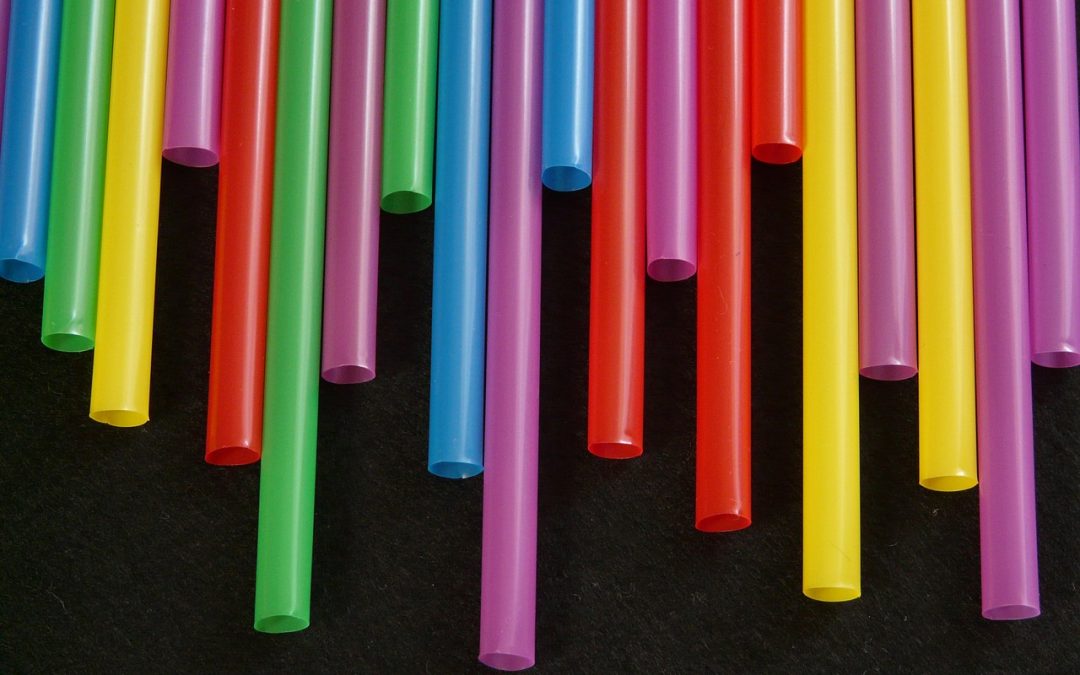The list of cities that are banning plastic straws is growing, and many restaurants, bars, and cafes are going straw-free voluntarily. Why straw free? How to make your restaurant straw-free? What’s wrong with straws? Here’s everything you need to know about the latest eco-trend and figure out whether or not your restaurant should jump on board.
Single-use plastics are a big part of the hospitality industry, particularly in food service. Customers are automatically given straws with their beverages and leftovers and to-go meals are typically served in plastic or styrofoam. Straws, Styrofoam, other plastics end up as pollution, often in the ocean.
Why straw-free?
Some people need straws for medical reasons and it’s easier for children, but most people use straws out of habit. Americans use an estimated 500 million drinking straws every day! Straws are small and light, easily blown away by the wind. Most recycling facilities do not accept straws, so they either end up as pollution or landfill. Biodegradable straws aren’t much better, just a more expensive option.
When straws and other plastics find their way into the ocean, they end up as pollution. They take years and years to break down (450 years for each plastic bottle), instead finding their way into the stomachs of marine animals and fish. As they do breakdown, they become micro plastics, which are small and easily ingested by fish. The fish can not break them down, so it stays in their system. When we eat these fish, we are consuming micro-plastic.
Going straw-free may seem like a small step in the grand scheme of things, but the small steps can lead to bigger ones. You can start by just asking customers if they would like a straw before handing it out. The National Park Service found that 50 to 80 percent of people will say to a straw if you ask! You can save money while cutting back on plastic use it’s a win-win.
Straw Alternatives
If your customers do demand a straw (which is less than 50 percent) you can offer them a paper one or get creative. By only giving straws to customers that ask for one, it offsets the higher cost of paper straws. The straws don’t have to be paper. There are metal reusable straws, bamboo, and even edible straws made out of Twizzlers or cookies (great for speciality drinks and milkshakes). Even large corporations like McDonalds are making the switch. McDonald’s will start replacing plastic straws with paper ones in the U.K, which is currently 1300 locations.
Be Part of the Change (or Not)
You can use this as a new business strategy to shift towards more sustainable practices. If you’re a farm-to-table restaurant it makes sense to try to be as environmentally friendly as possible. Being eco-minded can appeal to customers, particularly a younger demographic. You don’t have to broadcast your changes, if it doesn’t flow with your customer mindset. You can start slowly phases out straws and even single use plastics without your customers even noticing.
Could Your City Be Next?
Many cities, and even some countries, are taking a stance against single-use plastics. Straws are an easy place to start and help customers and businesses become less dependent on plastic. You can get ahead of the game if you see that your city is trending towards sustainability.
Cities currently going straw free (or at lease limiting the use)
- California: Malibu, Davis, San Luis Obispo
- Florida: Miami Beach, Fort Myers
- Washington: Seattle
The European Union is looking to ban straws and other single-use plastics across its 27 countries by 2030. Countries like France, the UK, and Canada are also reducing their use of single-use plastic usage.
What about Styrofoam?
Styrofoam is often used for delivery and to-go orders. It is a single-used plastic that isn’t currently recyclable. It also breaks down into smaller pieces, which are often ingested by animals and sea-life. It’s becoming banned in more and more cities due to it’s affect on the environment.
Cities that banned (or partially banned) Styrofoam
- New York: New York City, other cities
- Maryland: Takoma Park
- Washington: Seattle
- Florida: Miami Beach
- Maine: Portland, Freeport
- Massachusetts: Nantucket
- Minnesota: Minneapolis
- Oregon: Portland, other cities
- California: Los Angeles, San Francisco
What Can You Do Today
- Ask customers if they would like a straw, or start serving drinks without them and wait for customers to ask for one.
- As you start to make a dent on your straw supplies, look for alternatives like paper or bamboo straws.
- Consider phasing out your Styrofoam and plastic to-go containers and look for a sustainable alliterative like paper.
- Give customers paper bags to carry their meals in, instead of a single-use plastic one.
- Ask customers if they would like utensils in their takeout or delivery meal, if they’re going to eat at home they probably don’t need it!
- Give customers discounts if they bring their own cups for coffee or a smoothie
Your city may be the next to crack down on straws, you can be a head of the game! The small steps you take can help reduce your restaurant’s plastic use. You may even find you save money in the long-run by making these little changes. You can show customers your business cares about sustainability, and make it part of your branding and appeal to a younger demographic. If sustainability isn’t a part of your marketing or image, you can slowly make these changes so the customers become use to your new changes. Little steps towards sustainability may seem small, but they can help reduce plastic use.

